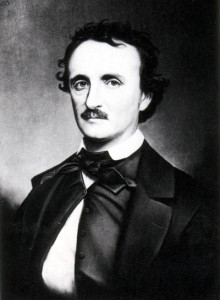 When you are in the middle of some current activity, do you ever stop and wonder about the Regency equivalent of what you are doing? I do. Maybe it’s just a sign of what a hopeless addict I am! Last month one of my most consuming activities was the annual yard sale conducted by my church. Regency people didn’t have “yard sales.” They could burn their trash and give the ashes to the dustman, and they could give their ruined clothing to the ragman, but what about the useable clothing, furniture, bric-abrac and household items that were no longer fashionable, or a little too worn, or just no longer wanted? What about closing the household of someone who died?
When you are in the middle of some current activity, do you ever stop and wonder about the Regency equivalent of what you are doing? I do. Maybe it’s just a sign of what a hopeless addict I am! Last month one of my most consuming activities was the annual yard sale conducted by my church. Regency people didn’t have “yard sales.” They could burn their trash and give the ashes to the dustman, and they could give their ruined clothing to the ragman, but what about the useable clothing, furniture, bric-abrac and household items that were no longer fashionable, or a little too worn, or just no longer wanted? What about closing the household of someone who died?
Our church sale was the biggest we’ve ever had, mostly thanks to the donation of tons of items from the home of a woman who had died during the summer. Have you ever had to clean out the home of a relative or friend? The very wealthy in the Regency made sure they had continuing generations of family to carry on, and often had large homes with attics or storerooms stuffed full of the furniture and belongings of the previous generations. Not everyone was so fortunate. Remember the scene from Dickens’s A Christmas Carol where the scavenging neighbors are hovering by old Scrooge’s deathbed just waiting to grab everything they could get?
People in the Regency, like those from other historical times, would be shocked by how wasteful we are today, even with the growing popularity (not to mention importance) of recycling. Life then demanded that people be practical and frugal, and nothing was wasted. Used goods, if not donated to charity, would be sold to the second-hand shops, pawn shops and street vendors, and might end up –like a giant yard sale–in the street markets, especially in London.
Street markets were and still are an essential and colorful part of London, like their rural counterparts. The city still offers plenty of them today, some dating back well before the Regency, although many more were established later, serving the needs of a growing city. The population of London was just under one million in 1800, and by the 1870s had tripled! All those people needed to be fed and clothed. In 2008 a London study counted 180 markets (including both goods and food markets), but the traditional pressures of changing neighborhoods and changing times are taking a toll, just as they have for centuries.
Some of the venerable old markets aren’t old enough to be Regency: Portobello Road Market (1860s), Berwick Market (1830’s), Inverness (1900). Other markets date all the way back to medieval times, such as the market at Romford (east of London) which was chartered in 1287, or the great wholesale food markets like Billingsgate (fish), and Smithfield (live cattle). Borough Market in Southwark is documented to 1276, but claims to have existed since 1014. Leadenhall (game & poultry) dates from 1445 with portions rebuilt in 1730, and Spitalfields (fruit, vegetables, meat and poultry, and also live songbirds during the Regency) was started in 1682. Covent Garden (fruit, vegetables, and flowers) was chartered in 1670. Brick Lane Market is also said to date from the 1600s, when it was a Sunday farmer’s market catering to the surrounding Jewish community. Leather Lane –near Hatton Garden –started when in the late 16th century(?) Sir Christopher Hatton asked permission for people to sell outside his gates, supposedly to recover funds for his gambling debts. A large Jewish community developed near there, with many who were merchants.

1746 Fleet Market Map (Roque)
Petticoat Lane (Middlesex Street, near Bishopsgate Institute) began in the 1750’s. Church Street Market began as Portman Market off the New Road (c 1800), once people moved out into the area (which also brought the formation of the first bus service!!) Some of the markets that served the vendors and household servants in our period are gone: Fleet Market (1736–1829), Shepherd Market in Mayfair (1735-?) and others.
These markets took all sorts of forms, from open-air (mostly food markets) to enclosed buildings (such as Shepherd’s Market, with a theater on the second floor). The Fleet Market was described as two rows of open single-story shops linked by a covered walkway. These markets were the forerunners of our present day shopping malls!
As usual, when I dipped into this topic, I discovered it was huge. It’s hard to just brush the surface and stop. Please jump in and join the conversation in our comments section. Have you ever visited one of London’s street markets? Had to dispose of your family’s used goods? Had a character in a story go to one of these markets? Let’s talk!
Here are some links in case you want to look further:
2008 London survey of street markets
A list of street markets currently operating in London and environs, from Wikipedia
Four fascinating short video documentaries made about local street markets: Brixton (1870s), Portobello Road (1860s), Leather Lane (1710s), and Church Street (1801)
http://www.stallstories.org.uk/
Ackermann images of Smithfield Market and Covent Garden 1811 (copyrighted by Museum of London):
Also, Mary Cathcart Borer’s book, An Illustrated Guide to London 1800, has an entire chapter about the markets, although it mostly covers the big food wholesale sites.
 Today I’m going to share another one of my favorite web site. Historic Food belongs to Ivan Day, a highly regarded food historian. Mr. Day, however, is much more than a historian. He is much in demand to present and recreate historic recipes. He prepares historically accurate banquets for historic locations, such as these at Harewood House in Leeds and Fairfax House in York. Take a look at his Events section. He’s done quite a bit of television in the UK (as if you needed another reason to wish you were there) and has written a couple of books. His work has been exhibited in many museums, including the Paul Getty Research Institute, Philadelphia Museum of Art, the Museum of London, Fairfax House, the Bowes Museum and the Rothschild Collection.
Today I’m going to share another one of my favorite web site. Historic Food belongs to Ivan Day, a highly regarded food historian. Mr. Day, however, is much more than a historian. He is much in demand to present and recreate historic recipes. He prepares historically accurate banquets for historic locations, such as these at Harewood House in Leeds and Fairfax House in York. Take a look at his Events section. He’s done quite a bit of television in the UK (as if you needed another reason to wish you were there) and has written a couple of books. His work has been exhibited in many museums, including the Paul Getty Research Institute, Philadelphia Museum of Art, the Museum of London, Fairfax House, the Bowes Museum and the Rothschild Collection. He also gives historic cooking courses at his 17th century farmhouse in Cumbria in his period kitchen. Another reason I’d like to be England.
He also gives historic cooking courses at his 17th century farmhouse in Cumbria in his period kitchen. Another reason I’d like to be England.






